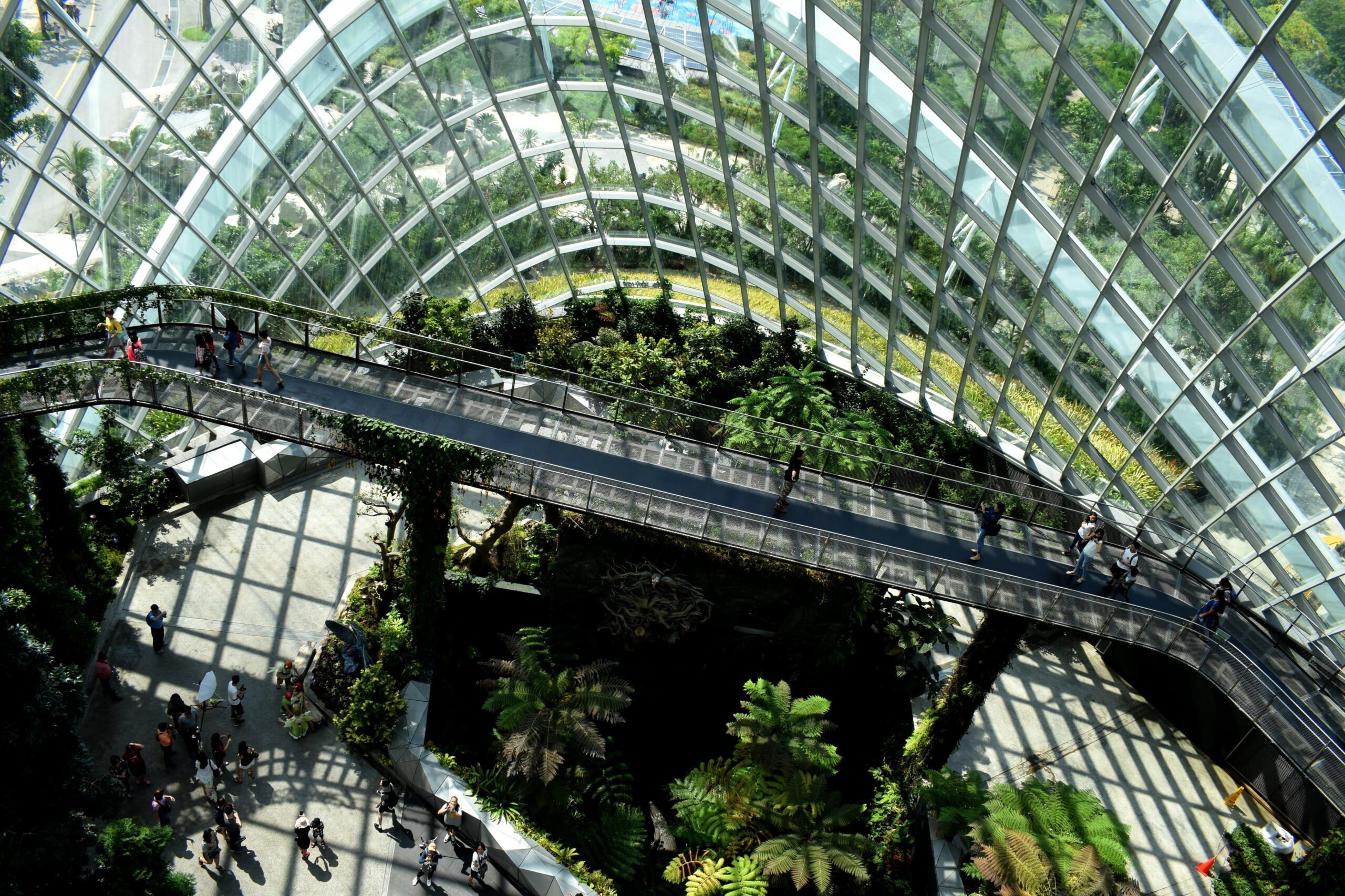Incorporating sustainability into your container home design is not only environmentally responsible but also cost-effective in the long run. By utilizing recycled shipping containers as the main structure, you are repurposing materials and reducing waste. Additionally, implementing energy-efficient systems, such as solar panels and rainwater harvesting, ensures that your home is both eco-friendly and self-sufficient. This article will guide you through various ways to incorporate sustainability into your container home design, from insulation choices to green landscaping options, allowing you to create a beautiful and sustainable living space.



This image is property of images.unsplash.com.
1. Energy Efficiency
When it comes to designing a sustainable container home, energy efficiency should be a top priority. By focusing on energy-saving techniques, you can reduce your carbon footprint and save on energy bills in the long run. Here are some key considerations for incorporating energy efficiency into your container home design.
1.1 Insulation
Proper insulation is crucial for maintaining a comfortable indoor temperature and reducing the need for excessive heating or cooling. Insulating your container home effectively can significantly enhance its energy efficiency. Consider using materials with high R-values, such as spray foam insulation or rigid foam boards. These insulation materials provide excellent thermal resistance, preventing heat transfer and minimizing energy loss.
1.2 Passive Heating and Cooling
Take advantage of passive heating and cooling techniques to reduce the dependency on mechanical systems. Position your container home to take advantage of natural sunlight and shade. This can be achieved through strategic window placement, optimizing the orientation of your home based on the sun’s path throughout the day. Additionally, consider incorporating shading devices like awnings or vegetation for natural cooling during hot summer months.
1.3 Renewable Energy Systems
Integrating renewable energy systems into your container home design is an excellent way to further reduce your environmental impact. Consider installing solar panels on the roof to generate clean and sustainable electricity. This renewable energy source can power your lighting, appliances, and HVAC systems. Additionally, you may also explore wind turbines or hydropower options if suitable for your location.
2. Water Conservation
Water is a precious resource, and designing your container home with water conservation in mind can significantly contribute to sustainability. By implementing efficient water-saving strategies, you can conserve water and reduce your overall consumption. Here are some key considerations for water conservation in your container home design.
2.1 Greywater Recycling
Implementing a greywater recycling system can be a valuable addition to your container home. Greywater refers to wastewater generated from sources like sinks, showers, and laundry. Instead of letting this water go to waste, a greywater recycling system allows for its treatment and reuse in irrigation or toilet flushing. By recycling greywater, you can reduce the demand for fresh water and contribute to a more sustainable water cycle.
2.2 Rainwater Harvesting
Utilizing rainwater harvesting systems can further enhance your water conservation efforts. By capturing rainwater from your container home’s roof, you can collect and store it for various non-potable uses, such as landscape irrigation or toilet flushing. Rainwater harvesting systems often involve the installation of gutters, downspouts, and storage tanks. This practice helps reduce strain on local water resources and promotes self-sustainability.
2.3 Efficient Fixtures
Incorporating efficient fixtures in your container home design is essential for minimizing water wastage. Install low-flow showerheads and faucets, which can significantly reduce water consumption without compromising on performance. Additionally, consider utilizing water-saving toilets that use less water per flush. These small changes can make a big difference in water conservation and contribute to the overall sustainability of your container home.



This image is property of images.unsplash.com.
3. Sustainable Materials
Choosing sustainable materials is paramount in designing a sustainable container home. Opting for eco-friendly building materials not only reduces the environmental impact but also ensures a healthier living space. Consider incorporating the following sustainable materials into your container home design.
3.1 Recycled or Reclaimed Materials
Using recycled or reclaimed materials is a fantastic way to minimize waste and make a positive environmental impact. For example, consider using salvaged wood flooring, reclaimed bricks or tiles, or recycled glass countertops. These materials not only add character and uniqueness to your container home but also help reduce the demand for new resources.
3.2 Low VOC Paints and Finishes
Volatile Organic Compounds (VOCs) are harmful chemicals present in many conventional paints and finishes. These chemicals can have adverse health effects and contribute to air pollution. Opt for low VOC paints and finishes to create a healthier indoor environment. Low VOC options are readily available and offer a wide range of colors and finishes.
3.3 Sustainable Flooring Options
When it comes to flooring, there are numerous sustainable options to choose from. Consider using materials like bamboo, cork, or reclaimed wood. These materials are renewable, have a lower environmental impact compared to traditional flooring options, and add a touch of natural warmth to your container home.
4. Natural Lighting
Incorporating ample natural light into your container home design not only enhances its aesthetic appeal but also offers various benefits such as improved mood, productivity, and energy savings. Here are some ways to maximize natural lighting in your container home.
4.1 Skylights and Windows Placement
Strategically placing windows and skylights in your container home design is key to maximizing natural lighting. Position larger windows on the south-facing sides of your home to take advantage of the maximum amount of natural sunlight. Skylights are also an excellent addition, especially in areas where windows might not be feasible. They allow sunlight to penetrate from above, brightening up the space even more.
4.2 Light-colored Interior Finishes
Opting for light-colored interior finishes, such as paint or wallpapers, can significantly enhance the natural lighting in your container home. Light colors reflect more light, making the space appear brighter and more spacious. Avoid dark or heavy materials that can absorb light and make the space feel dim.
4.3 Sun Tubes and Light Wells
For areas in your container home where windows or skylights might not be viable, consider utilizing sun tubes or light wells. These innovative design elements allow natural light to trickle into interior spaces through reflective tubes or wells. They are especially useful for areas like hallways, closets, or bathrooms, where natural lighting may be limited.



This image is property of images.unsplash.com.
5. Efficient Space Planning
Optimizing your container home’s interior layout and space utilization is essential for creating an efficient and functional living space. Here are some space planning strategies to consider for your container home design.
5.1 Utilizing Open Floor Plans
Open floor plans promote a sense of spaciousness, maximize natural light, and improve airflow. By removing unnecessary interior walls, you can create a flexible living space that allows for easy movement and promotes a sense of togetherness. Open floor plans also enhance the versatility of your container home, allowing you to adapt the space to changing needs or functions.
5.2 Multi-functional Furniture
Incorporating multi-functional furniture is a smart way to maximize usable space in your container home. Look for pieces that serve multiple purposes, such as sofa beds, storage ottomans, or folding tables. These furniture items can help you make the most of limited space while still providing the functionality you need.
5.3 Built-in Storage Solutions
Efficient storage solutions are essential for keeping your container home organized and clutter-free. Opt for built-in storage options, such as floor-to-ceiling cabinets or built-in shelves. These additions help maximize vertical space and provide ample storage while minimizing the need for bulky furniture or excessive clutter.
6. Sustainable Heating and Cooling
Maintaining a comfortable temperature inside your container home while minimizing energy consumption is crucial for a sustainable design. Here are some considerations for efficient heating and cooling in your container home.
6.1 High-efficiency HVAC Systems
Choosing a high-efficiency HVAC (Heating, Ventilation, and Air Conditioning) system is essential for sustainable temperature control. Look for systems with a high energy efficiency rating, such as those certified under the Energy Star program. These systems use less energy to provide the same level of comfort, reducing both your energy consumption and carbon footprint.
6.2 Natural Ventilation Strategies
Implementing natural ventilation strategies in your container home design can help reduce the need for mechanical cooling. Consider incorporating features like operable windows, louvers, or vents that allow for cross-ventilation. This design approach promotes fresh airflow, improves indoor air quality, and reduces reliance on mechanical systems.
6.3 Heat Recovery Ventilation
Heat recovery ventilation systems can further enhance the energy efficiency of your container home. These systems extract stale indoor air while recovering the heat from it and transferring it to the fresh incoming air. By recovering and reusing the heat, you can reduce the energy required to heat your home, resulting in lower energy bills and a smaller environmental footprint.
7. Green Roof and Vertical Gardens
Green roofs and vertical gardens are innovative ways to incorporate nature into your container home design while providing numerous environmental benefits. Consider the following aspects when incorporating green roofs and vertical gardens in your container home.
7.1 Benefits of Green Roofs
Green roofs provide insulation, improve air quality, and mitigate the urban heat island effect. By covering your container home’s roof with vegetation, you create an additional layer of insulation, reducing heating and cooling needs. Green roofs also absorb rainwater, minimizing stormwater runoff. They provide habitat for birds and insects and contribute to overall biodiversity.
7.2 Types of Vegetation
When choosing plants for your green roof or vertical garden, consider selecting native or adaptive species that thrive in your local climate. These plants are well-suited to the environmental conditions, requiring less water and maintenance. Additionally, incorporating a variety of plant species creates a visually appealing and dynamic green space on your container home.
7.3 Designing a Vertical Garden
Vertical gardens are a creative way to incorporate plant life into the exterior or interior walls of your container home. Consider implementing a hydroponic or aeroponic system to support the growth of plants in a vertical garden. Irrigation systems can be incorporated to ensure the plants receive adequate water while minimizing water wastage. Vertical gardens not only enhance visual aesthetics but also provide additional insulation benefits.
8. Eco-friendly Insulation
Choosing the right insulation materials for your container home is crucial for ensuring energy efficiency and reducing environmental impact. Consider the following eco-friendly insulation options in your container home design.
8.1 Natural Fiber Insulation
Natural fiber insulation, such as wool, hemp, or cellulose, offers an eco-friendly alternative to conventional insulation materials. These materials are renewable, have excellent thermal properties, and are often produced using sustainable manufacturing processes. Natural fiber insulation is also safe for indoor air quality, as it does not contain harmful chemicals often found in traditional insulation.
8.2 Cork Insulation
Cork insulation is another sustainable option to consider. Cork is a natural, renewable material that is harvested from the bark of cork oak trees. It has excellent thermal insulation properties, is resistant to fire and pests, and acts as a natural sound absorber. Cork insulation is an eco-friendly choice that contributes to superior energy efficiency and sound insulation in your container home.
8.3 Recycled Denim Insulation
Recycled denim insulation is made from reclaimed denim fabric waste, providing a sustainable and effective insulation option for your container home. This type of insulation offers good thermal resistance, is non-toxic, and can help reduce landfill waste. Recycled denim insulation is also easy to install and has excellent sound absorption qualities, resulting in a comfortable and energy-efficient living space.
9. Efficient Appliances and Fixtures
Using energy-efficient appliances and fixtures is essential for reducing energy consumption and optimizing sustainability in your container home. Consider the following options for energy-efficient appliances and fixtures.
9.1 Energy Star Rated Appliances
When selecting appliances for your container home, prioritize those with the Energy Star label. Energy Star appliances meet strict energy efficiency guidelines set by the Environmental Protection Agency (EPA). These appliances use less energy while still providing the desired functionality. Look for Energy Star-rated refrigerators, dishwashers, washing machines, and other essential appliances for your container home.
9.2 Low-flow Showerheads and Faucets
Installing low-flow showerheads and faucets throughout your container home can significantly reduce water consumption without compromising water pressure or performance. These fixtures use less water per minute, leading to measurable water savings over time. Low-flow showerheads and faucets are readily available, easy to install, and can make a noticeable difference in your water usage.
9.3 Smart Home Automation
Incorporating smart home automation technology can further enhance energy efficiency in your container home. Smart thermostats allow you to control and optimize your HVAC system remotely, adjusting the temperature based on your preferences and schedule. Smart lighting systems can automatically adjust lighting levels based on natural light availability or occupancy, minimizing energy waste. By integrating smart devices, you can optimize energy usage and reduce your carbon footprint.
10. Waste Management
Proper waste management is essential for sustainable living, and designing your container home with waste reduction in mind is a responsible choice. Consider the following waste management strategies for your container home.
10.1 Recycling and Composting Systems
Implementing recycling and composting systems within your container home promotes responsible waste management. Set up recycling bins for sorting materials like paper, plastic, glass, and metal. Composting organic waste not only reduces landfill waste but also produces nutrient-rich compost for gardening. Designating dedicated areas for recycling and composting encourages sustainable habits and reduces your overall waste output.
10.2 Minimizing Construction Waste
During the construction or renovation of your container home, make an effort to minimize construction waste. Optimize material usage by careful planning and measurement. Reuse or repurpose any excess materials whenever possible. Select materials with minimal packaging or those that can be recycled easily. By minimizing construction waste, you contribute to a more sustainable building process.
10.3 Upcycling and Repurposing
Upcycling and repurposing items can add a unique touch and reduce the demand for new resources. Look for opportunities to repurpose materials or objects in your container home design. For example, you could use reclaimed wood pallets as wall paneling, or repurpose vintage furniture into functional pieces. Upcycling and repurposing not only showcase your creativity but also contribute to a more sustainable and eco-friendly living space.
Incorporating sustainability principles into your container home design requires thoughtful planning and consideration. By focusing on energy efficiency, water conservation, sustainable materials, natural lighting, efficient space planning, heating and cooling systems, green roofs, insulation, efficient appliances and fixtures, and waste management, you can create a container home that is both environmentally friendly and comfortable to live in. Embrace sustainability in your container home design and make a positive impact on the environment while enjoying the benefits of a sustainable and energy-efficient living space.
